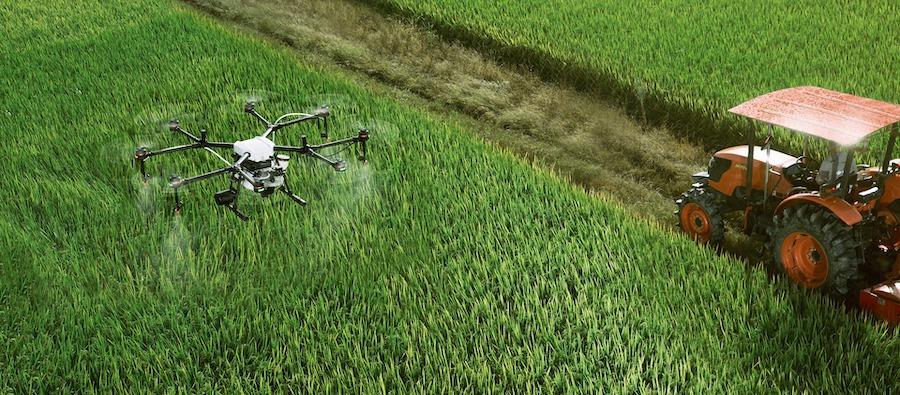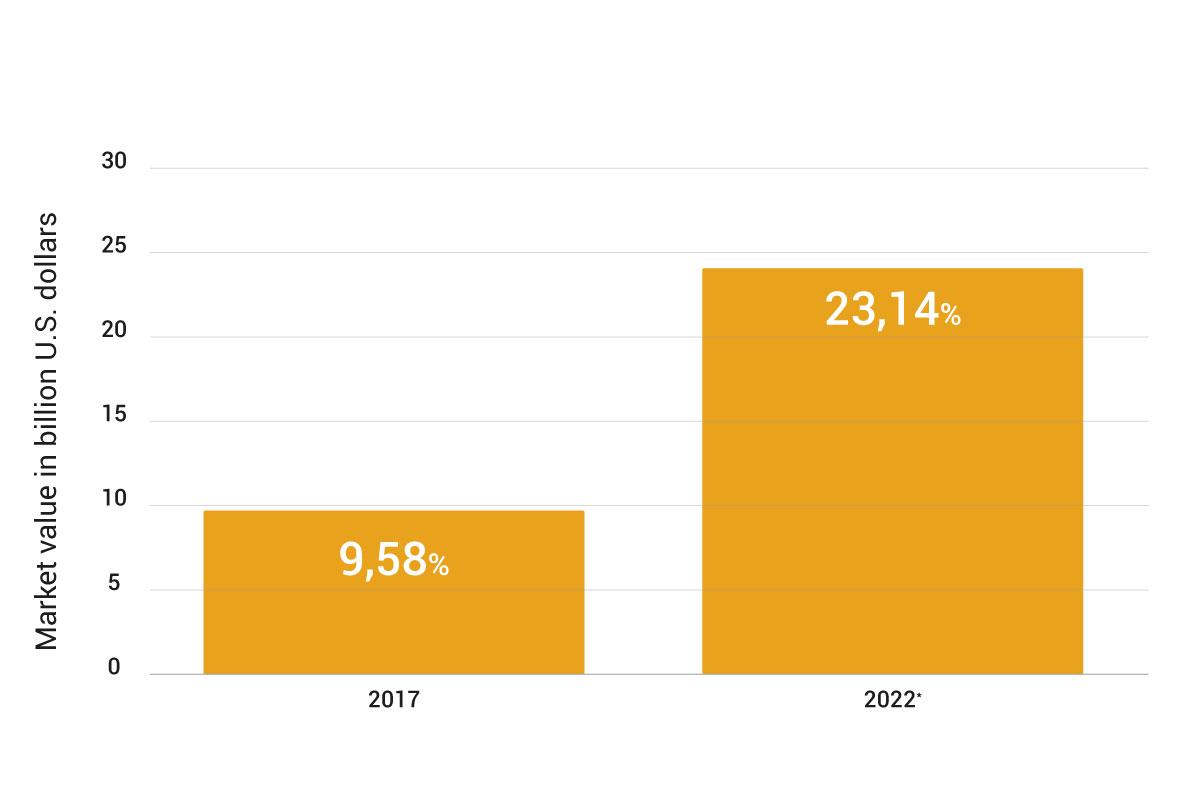IoT in Agriculture


The Internet of Things (IoT) has taken a place in many areas of our life – health, sports, household routines, smart houses and even smart cities, transportation, the automotive industry, etc. IoT in agriculture is an especially important application.
The market share of the Internet of Things in agriculture is constantly growing. Compared to 2017, by 2022 it is expected to more than double. Although these methods are expensive, they quickly pay off. Now let’s take a closer look at all aspects of smart agriculture: what it is, how to use it, what farming solutions it can offer, and what problems may arise in the process of implementation.

Smart Agriculture
Technological changes have greatly influenced agricultural processes. Farming has become more technologically oriented, and the farmers themselves now can control all aspects more accurately and in detail – plant cultivation, watering, fertilization, livestock breeding, and animal health control. Smart agriculture also allows you to analyze and compare large amounts of data, which makes farming more predictable, and therefore more efficient.
Farming Solutions and Their Benefits
Agriculture IoT offers the use of technology in farming processes. These include monitoring, analysis, control, management, and, ultimately, improvement of main agricultural processes at all stages of the agricultural cycle: preparatory stage, production, and post-production. This means the introduction of many technologies and the automation of most processes, where a person only monitors and configures systems but doesn’t directly deal with the processes themselves.
Some of the most useful farming solutions can:
- Analyze large volumes of data, compare statistics, make forecasts and make decisions on efficiency;
- Control all processes, starting from water, fertilizers, spraying, pest control to the control of working with livestock – feeding, reproduction, medical support;
- Automate everyday processes, excluding unnecessary employees from the process and minimizing routine mistakes;
- Manage costs and reduce waste by increasing control over overproduction.
The market is still new. Companies that want to join right now have ample opportunities with agriculture software development. Agriculture IoTcreated by Sirin Software can set you apart as a quick and early adopter and thus help pave the way for your company’s or farm’s success.
Examples of Agriculture IoT
To better understand what you can get from the Internet of Things in agriculture and what farming solutions you can implement, here are a few specific examples.
Tracking weather conditions
Automated environmental monitoring helps in crop cultivation. You will be able to accurately and flexibly monitor any changes in the weather and adapt to them.
Crop management and health monitoring
The harvest is often lost due to inefficient measures taken to protect the crops from disease or other factors. With automatic detailed tracking, you will be able to react faster.
Precision farming
Automatic seeding allows you to plant crops with an accuracy of a centimeter and water them with an accuracy of every milliliter.
Livestock monitoring and maintenance
The main problems that arise in working with animals are disease and birth control. IoT in agriculture has technologies to solve these, too. There are technologies that even allow you to track each animal separately.
Agricultural trading
The Internet of Things in agriculture is used not only in internal farming processes but also in communication with the outside world. You will be able to sell faster and more efficiently, as well as cooperate.
These are just the main advantages offered by IoT in agriculture. Agriculture software development can be very flexible for every purpose.
Challenges That Accompany the Implementation of the Internet of Things in Agriculture
Despite the obvious benefits of agriculture IoT, the pitfalls encountered along the way to their use can be daunting. Let’s take a look at the main challenges:
Capital investments
The technologies of smart agriculture, their implementation, and even maintenance are quite expensive. To begin, try the cheapest options and methods, optimize farming with their help, make money and introduce more in the next “sprint”.
Bad connection
A steady good internet connection is a must for the smooth operation of IoT in agriculture. Before buying equipment, think about a strong wireless network that covers your territories.
Hacking
Although this aspect tends to be brought up too late, you need to think about it in advance. Think over the agriculture software development from the very beginning, starting with a protection system.
Humanity needs large amounts of food all the time, and the Internet of Things in agriculture is the best way to ensure the constant growth of the crop. Sirin Software can help you to choose agriculture software development that optimizes your agricultural work. IoT in agriculture takes farming to a whole new level – technical, convenient, and profitable.